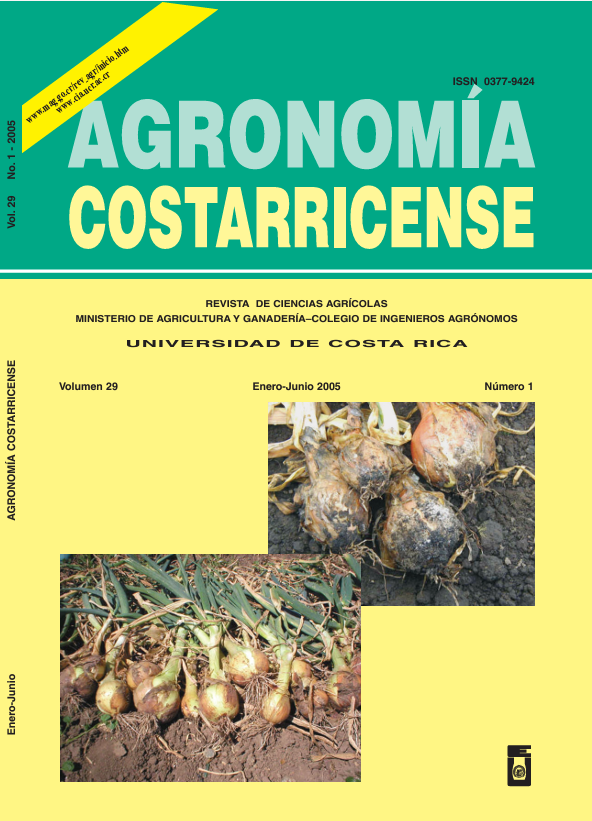Abstract
For a better understanding of the nutrient cycling in a 10 year-old Vochysia guatemalensis plantation, a study was carried on to determine the rate of litterfall and leaf decomposition during one year. For the litterfall, plastic screen traps (1.5x1.5 mm) of 0.71 m2 were randomly distributed in the plantation. The material was collected monthly. For decomposition, 0.4 m2 metal screen bags (1.5x1.5 mm) containing 8 g of mature dry leaves were placed on soil free of debris, and partially covered with litterfall, in the middle of 19 plots. Plots had different treatments of NPK and P fertilization. The first 2 months, a bag was taken from each plot every 15 days; afterwards, a bag was collected every month. A total of 750 g m-2 of dry weight of litterfall was collected, mainly composed of leaves and branches of Vochysia. The highest rate was observed during the dry season between December and April. For the reproductive material 2 peaks occurred: one composed mainly of flowers in May and another with fruits and seeds in October-November. During the first 2 months, a relatively high decomposition rate occurred, with approximately 40% less weight compared with the initial value. Later, the rate decreased significantly. By the end of the 15 months, an average of 39% of the original amount was still present. No statistically differences were detected among the fertilized plots. The accumulation of litter on the forest floor, has been regarded as a positive management tool, because it reduces the possibility of nutrient leaching and soil erosion.
##plugins.facebook.comentarios##

This work is licensed under a Creative Commons Attribution-NonCommercial-NoDerivatives 4.0 International License.
Copyright (c) 2024 Agronomía Costarricense


